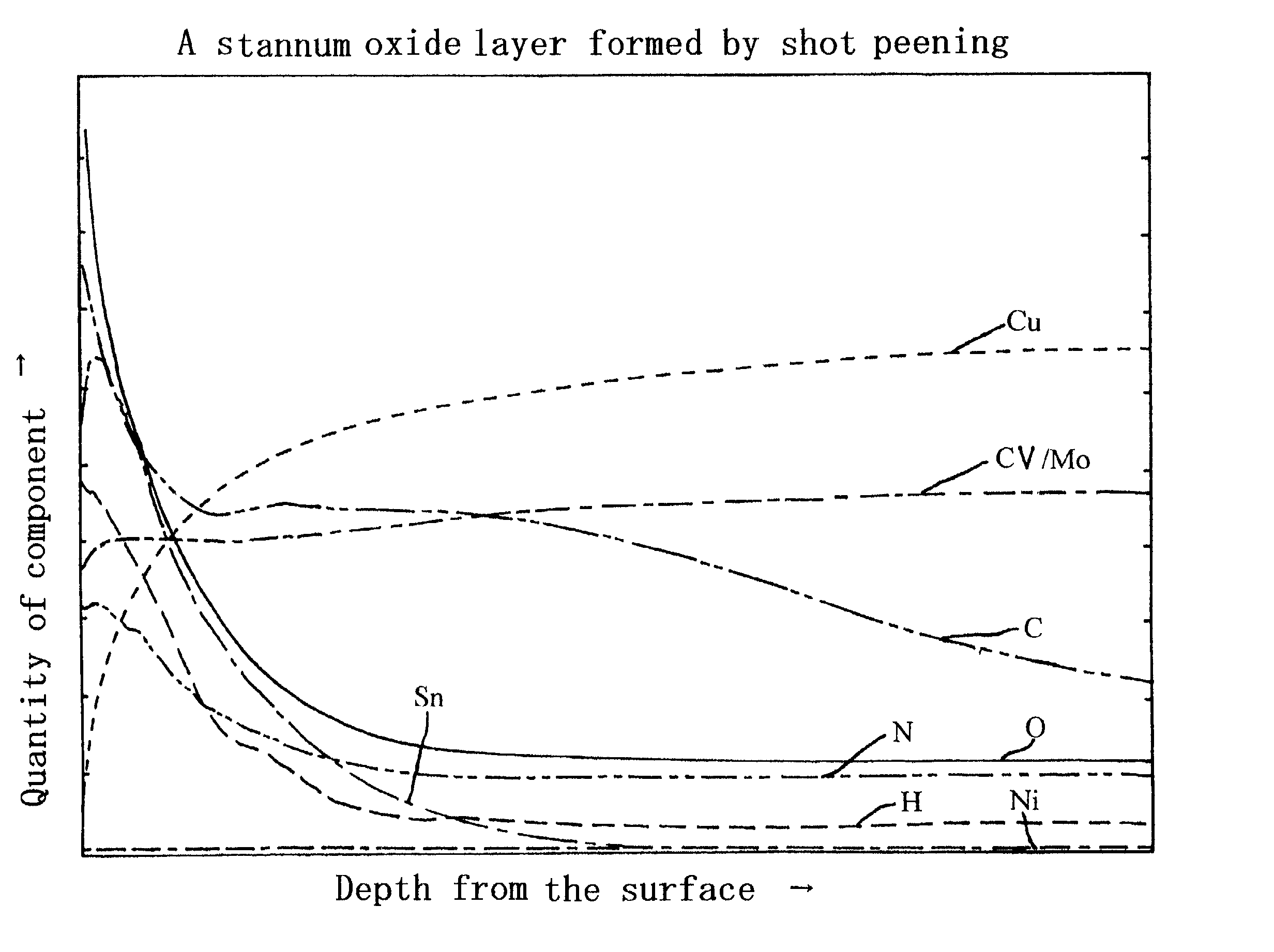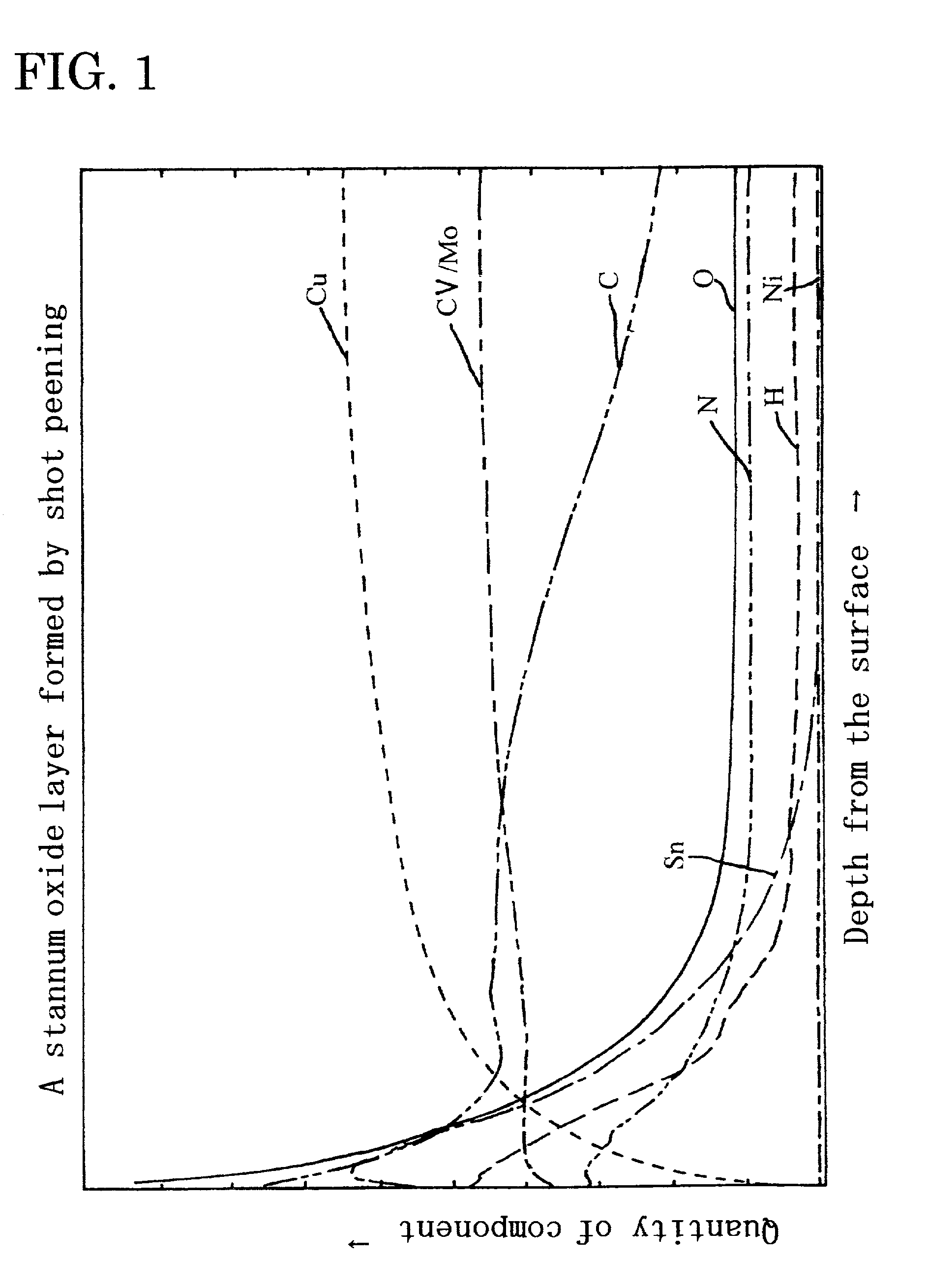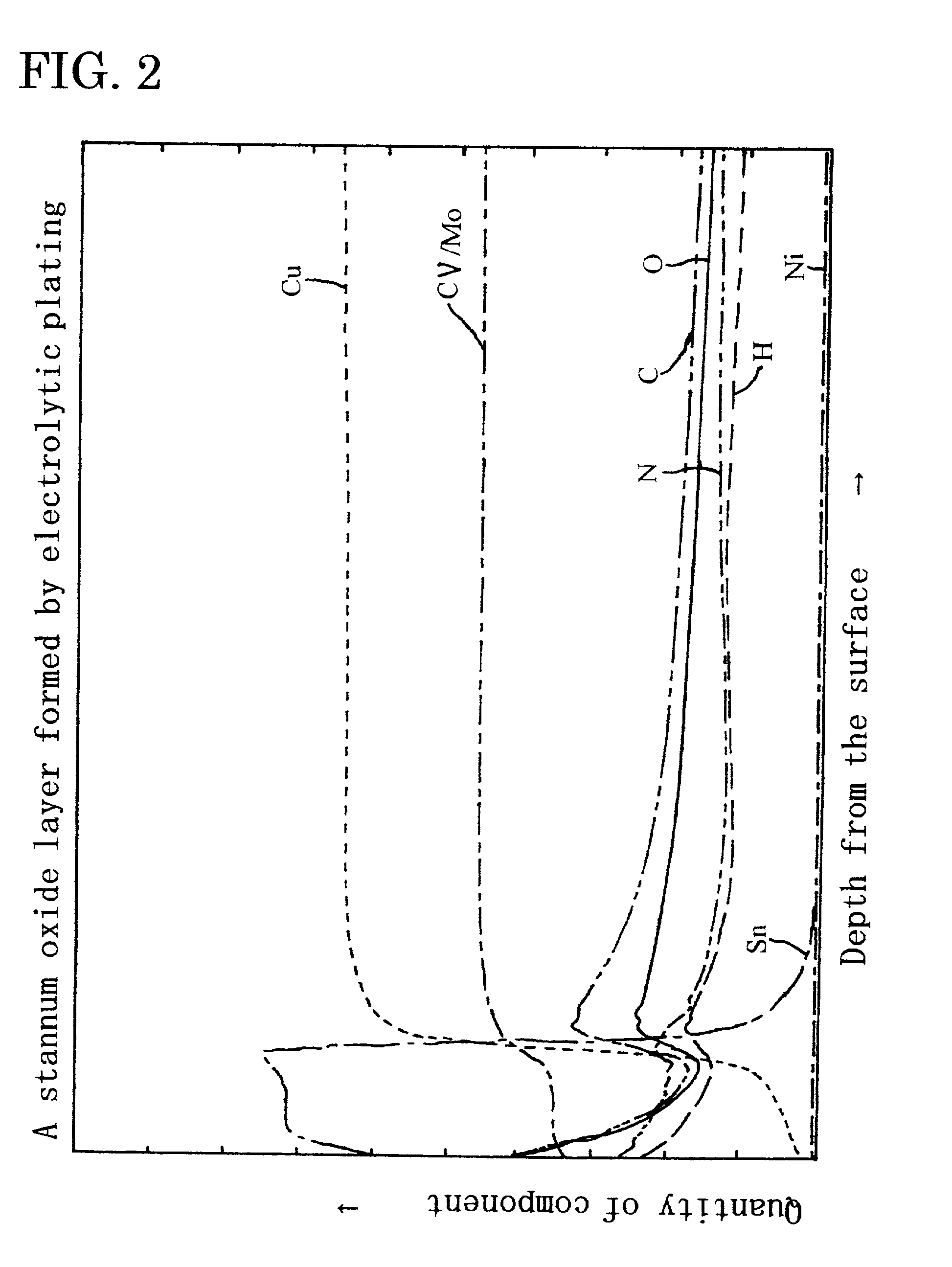Metal oxide layer having oxygen deficit tilting structure
a metal oxide and tilting structure technology, applied in metal/metal-oxide/metal-hydroxide catalysts, physical/chemical process catalysts, tin oxides, etc., can solve the problems of poor processability of titanium, cost elevation, and limited application fields
- Summary
- Abstract
- Description
- Claims
- Application Information
AI Technical Summary
Problems solved by technology
Method used
Image
Examples
example 2 example 1 un
-treated (minutes) (TiO.sub.2) (SnO.sub.2) (torumarine) product 0 721 717 723 703 10 680 677 693 710 20 641 631 660 723 30 602 574 615 725 40 567 510 564 727 50 532 460 515 727 60 505 424 476 728 70 479 390 458 728 80 453 357 437 728 90 430 336 429 727 100 410 314 423 727 110 405 301 419 727 120 398 298 415 726
[0074] In addition, ORP is an abbreviation of Oxidation Reduction Potential and a decline of numerical values of ORP shows that tap water is reduced.
[0075] As shown in a table 4. ORP in tap water wherein the photocatalyst coated composition of which a titanium oxide layer of the present invention was formed thereon was stored therein was decreased as time passes by, in addition, the ORP was decreased more than that of torumarine known as a generation source of minus ions, therefore it was confirmed that the photocatalyst coated composition shows a reduction power equal to or more than that of torumarine and it was confirmed that catalytic reaction, i.e.. a photocatalysis was e...
PUM
| Property | Measurement | Unit |
|---|---|---|
| heat resistance | aaaaa | aaaaa |
| temperature | aaaaa | aaaaa |
| wavelength | aaaaa | aaaaa |
Abstract
Description
Claims
Application Information
 Login to View More
Login to View More - R&D
- Intellectual Property
- Life Sciences
- Materials
- Tech Scout
- Unparalleled Data Quality
- Higher Quality Content
- 60% Fewer Hallucinations
Browse by: Latest US Patents, China's latest patents, Technical Efficacy Thesaurus, Application Domain, Technology Topic, Popular Technical Reports.
© 2025 PatSnap. All rights reserved.Legal|Privacy policy|Modern Slavery Act Transparency Statement|Sitemap|About US| Contact US: help@patsnap.com



